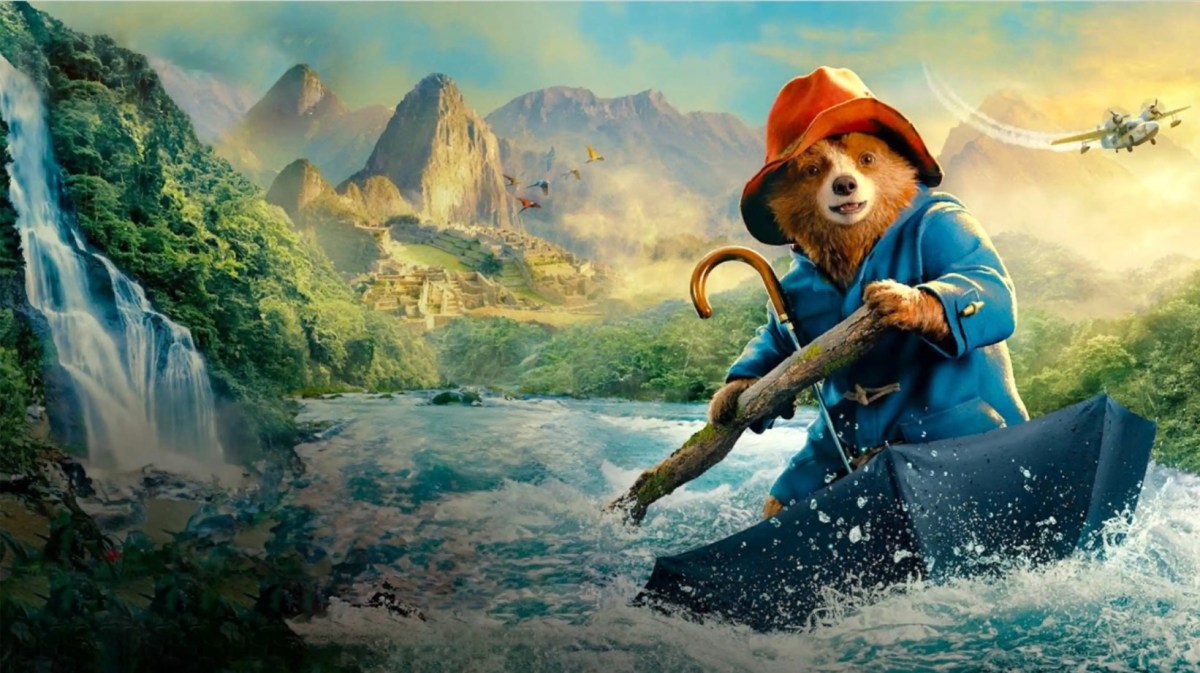Article by Jane Barnwell, University of Westminster
The little bear with a taste for marmalade sandwiches is back on the big screen, this time embarking on an adventure back to his South American homeland of Peru and, ultimately, to himself.
Paddington in Peru kicks off with the bear (Ben Wishaw) receiving a British passport marking his new national identity. When Paddington visits his good friend Mr Gruber’s (Jim Broadbent) antique shop and sees a small Peruvian ornament appear to come to life, Gruber suggests that becoming British can come with mixed emotions.
Such emotions are heightened when Paddington receives a letter from his Aunt Lucy saying that she is quite troubled and melancholy in the retired home for bears she lives in. This inspires a trip to Peru with his adopted family, the Browns.
Paddington arrives
If you know Paddington, a simple visit home was never on the cards. The family arrive to find Aunt Lucy is now missing. The Browns set off into the jungle in search of her with the help of riverboat captain Hunter Cabot (Antonio Banderas) and his daughter Gina (Carla Tous). The adventure ultimately turns out to be a quest for home as Paddington discovers his origin story.
This sort of quest is a key feature of the Paddington stories. The Paddington films can be understood as an example of outsider narrative, with the little bear having migrated from Peru and made London his home. The film contains messages of tolerance towards difference and diversity, particularly in that Paddington’s differences (he is a talking bear after all) are often foregrounded as strengths.
ScreenHub review: Paddington
The Paddington books were written by Michael Bond in the 1950s. They echo the real experience of migrants who were invited to make the UK their home but on arrival recieved a mixed reception, much like the Windrush generation who were some of the first West Indians to migrate to the UK in 1948.
Released in 2014, the first film began with Paddington’s arrival in London. After a shaky start, he was welcomed into the Browns’ family home, creating a positive allegory of migration and interracial harmony. This was reaffirmed in Paddington 2 (2017) where he writes to Aunt Lucy: ‘You sent me to London to find a home and it’s worked out beautifully.’
Paddington goes home
The importance of family is central to the films and Paddington in Peru is no exception. Mr Brown (Hugh Bonneville) is encouraged to ’embrace risk’ by his new boss, while Mrs Brown (Emily Mortimer) misses spending more time with her children, Jonathan (Samuel Joslin) and Judy (Madeline Harris), who are now busy teens. The empty family sofa becomes emblematic of the soon to be empty nest. Making the family trip to Peru the perfect opportunity to reconnect.
In Paddington in Peru, however, the home becomes a much more complex concept. While things may have ‘worked out beautifully’, that doesn’t negate all Paddington was and had back in in his homeland.
The hero’s quest to return is a fundamental mythic narrative. As film scholar Susan Mackey Kallis states, the quest involves the hero finding themselves and a home in the universe. The hero’s quest is a double quest that often demands a journey home not only to the place from whence the hero departed, but to a state of being or consciousness that was within the hero’s heart all along.
Paddington in Peru fits this narrative pattern, as the bear goes on an emotional journey to discover his lost heritage and reconnect with his adopted family, learning more about himself in the process. It’s a classic addition to the Paddington universe, a great fun film for all the family filled with loving homages to the bear’s history.
Jane Barnwell, Reader in Contemporary Media Practice, University of Westminster
This article is republished from The Conversation under a Creative Commons license. Read the original article.





